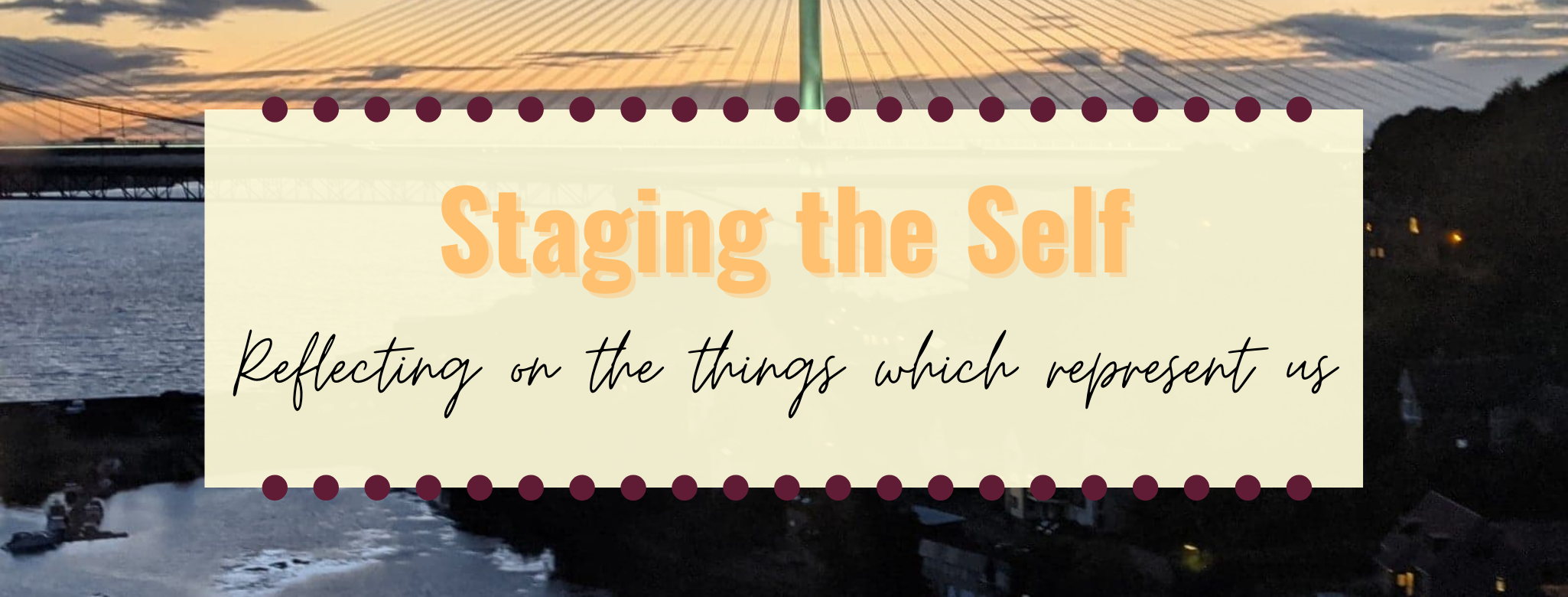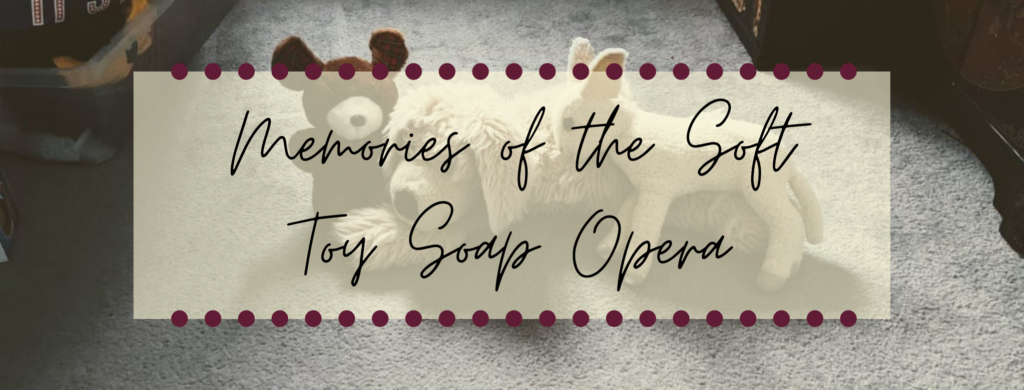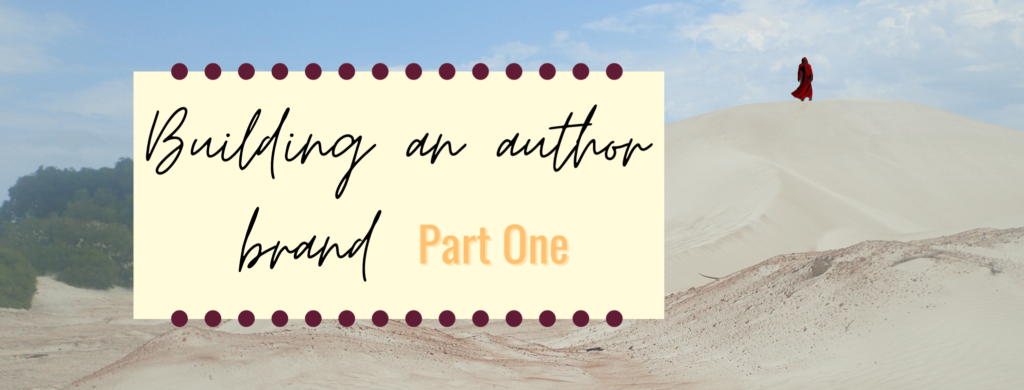Well, this post has been percolating for a while! I’m at the stage of my PhD (or maybe just life) where many things are happening at once. I’m re-drafting chapters, prepping conference papers, thinking about applying for jobs, dealing with changes to my current job, packing up my life to move, not to mention the fact the new wave of Shifting Sands comes out next week… It sometimes doesn’t leave much room in my brain for “fronts” other than what is directly in front of me. But, in doing all of these things, I’ve also been thinking a lot about how we signal who we are. What props do we use to enhance our identity performance? How are we staging the self?
Staging the Self
In Goffman’s dramaturgical metaphor, elements of theatre are applied to everyday life to explain how someone is trying to manage their impression. We all want to come away from an interaction having given the ‘right’ impression, after all — that we are smart, or friendly, or rebellious, etc. But to do this, we can make use of the ‘stage’ around us and whatever props are available. Frank Abagnale is a great example of this working. In wearing the right costume, having the right manner, and the assumptions made because of the ‘stage’ he was on, Abagnale got away with performing as a pilot/lawyer/doctor/etc despite being an unqualified teenager. He was able to take advantage of the “communicative value” (Messigner, Sampson, and Towne, 2017, p.77) of the props he had access to and crafted a believable performance .
*On a complete aside, I find Abagnale’s point in the video linked above about who felt most affected by his deception really interesting. Perhaps I’ll get around to doing a blog post about this. There are certainly a few authors whose fanbase have felt deceived by that I could mention…
Staging the Self Online
Goffman’s work revolves around in-person interactions. The internet, as it is today, did not exist when he was writing. As such, his focus is on boundaried performances, where the performer has one stage, one audience, and then can move somewhere else to take on a new performance. They can let the different aspects of themselves — as doctor, parent, pokemon master — rise and fall in importance according to the needs of the audience in front of them. And, online, this used to be the norm too, perhaps even to a greater extent. You would go to sites that correlated with a specific interest and then could be that aspect of yourself there, while another site might bring out a different side of you. On social media, however, or if performing as a public figure, this differentiation is less concrete. We expect authenticity.
On the one hand, the internet is great for this. To post online requires intention. Whereas in-person interactions can have unintended slips, where the mask falls, or an interruption throws the performer out of their desired role, to create a post online has several steps. There’s time to finesse the performance. And there are also more props directly within the performer’s control. Take this author website. The colour palette, images used, font… All decided by me. They matched the impression I wanted to give. And you have a similar level of control on social media with bios and profile images (though you are working within the constraints of the platform there). Interruptions can still happen. I’m sure we’ve all been tagged in awful photos on Facebook. And a collapsed together audience is harder to navigate. But the performer has many props in front of them to give the intended impression.
Why have I been thinking about this?
As noted above, I recently presented at a new conference. And I liked the presentation! But I had an interesting moment of disconnection when the conference organisers asked me to supply a photo for their website. I’m used to writing bios for conferences. They’re awful. I never feel like I’ve captured the ‘me’ I want my peers to see. A photo though, that should be easier, right? I knew exactly which one I wanted to use! …Right up until I checked what the other presenters had chosen.

Obviously, I’d need to narrow the image to make it more of a portrait, but it’s probably the photo I feels captures ‘me’ most accurately. Maybe it’s because I’m travelling? I’m not sure. I might not even feel that this is the most ‘real’ representation of me in a few weeks. Regardless, it was the first photo that sprang into mind when asked.
When I checked what other presenters had used, however… They all looked so professional. Everyone was in front of white walls. So, I caved. I used one of the colour versions of my author photo. It’s a nice photo. I use it as my author profile photo for a reason. But there was something really jarring about making that switch though.
Rationalising my thoughts
If you’re staging the self, and I mean actively making use of the props and setting in front of you, that probably means that you have a specific impression you want to give. My author photo matches the desired impression for that particular performance. I also think it theoretically matched the ‘stage’ established by the other presenters at that conference through their selection of photos. So, why does part of me still wish I’d used the photo above?
Honestly, I’m not sure. Peeling back the layers, I’m wondering if it’s because my brain had chosen the photo before I looked at what the other presenters had done. I had already decided that this was the most accurate version of ‘me’, that it summed me up best. And, given the fact that my presentation was titled “Who am I?”, that authenticity felt pretty important. Moving to the author photo was the right choice — it was better suited to the audience — but I guess in some ways I’d already had a glimpse of the me behind the mask. I knew what felt most ‘real’. Taking up another photo, another mask, therefore felt false. We go through various masks everyday, all of them being aspects of the ‘real’ self, but I suppose this is an instance where the transition glared at me. And apparently this bothered me!
The bigger picture
In some ways, this discussion around staging the self all links back to what I’m doing or have done with this PhD. There are some aspects which feel like ‘me’ and then others which… are just not quite there. To quote Goffman, I’m not “taken in” (1990) by the performance. This is for a combination of reasons — with some I can see the artifice, others felt like ‘me’ at the time but I’ve evolved as I’ve gone along. The dissertation is one example. My early chapters don’t adequately represent me, or the me I want to present, and so need a lot of reworking. Thankfully, these are things I can fix. And, to be completely cynical for a moment, it’s the bit my examiners are going to see! Other bits… I suppose I just have to sit with the imperfections I see. But now you all know that the most ‘real’ me apparently sits on a camel!



